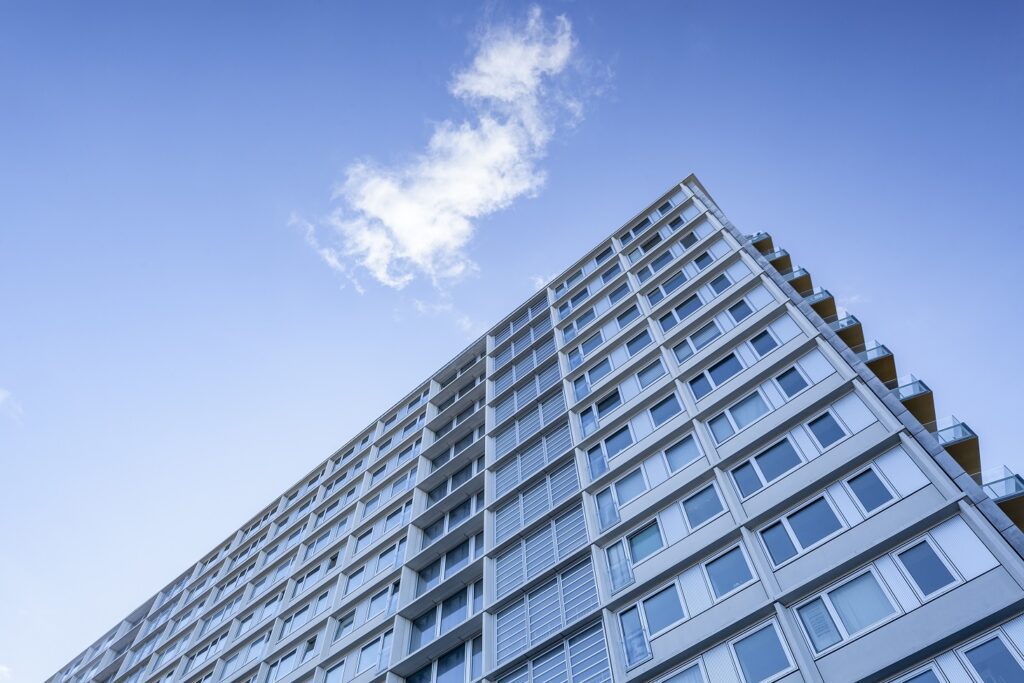Generally speaking, “other” is deemed to be less important, but in this case, some of the most significant items in the Agreement fall within the smaller sections.
I’ve received a few emails from people saying, “Boooooooring!” But I can’t stress how important this week’s blog posts are.
I’ve spent countless hours reading and analyzing the Agreement and I hope that you will all read these blog posts TWICE just to make sure you didn’t miss anything…

Finishes
“The Purchase Price shall include those items listed on Schedule “B” attached hereto. The Purchaser acknowledges that only the items set out in Schedule “B” are included in the Purchase Price and that model suite/vignette furnishings and appliances, decor, upgrades, artist’s renderings, scale model(s), improvements, mirrors, drapes, tracks, and wall coverings are for display purposes only and are not include in the Purchase Price unless specified in Schedule “B.”
Fair is fair – I get it.
I’m not going to attack this clause and the developers who use it by somehow arguing that buyers are entitled to everything that they see in the model suite.
When you see a car on TV and it says “From $15,995,” there is fine print at the bottom reading, “Actual Model Shown $22,995.”
The onus certainly falls on the buyer to verify everything in Schedule B.
However, and you knew that a “however” was coming, it is the small stuff that bothers me.
I know I’m not getting the stainless-steel appliances that I see in the model suite unless I pay to upgrade from my basic package and include this in Schedule B.
But things like “tracks” and “mirrors” bother me to no end.
Most sliding doors have mirrors, right? In the bedroom and in the hallway? Well unless you specifically state in your Schedule B that you want mirrors on the doors, you likely won’t get them! You’ll walk in to the condo for your PDI and see a cheap sliding door made of plastic.
Lighting is a huge issue of mine. As I detailed in my posts about West Side Lofts, my condo had only TWO lights – one at the very front of the hall, and one in the kitchen. This left the hallway, living/dining, master bedroom, and second bedroom completely dark. It cost me $2,800 to get an electrician to come in and install five new light fixtures. Forget about the actual fixtures themselves – just expect the cheapest of the cheap, and ignore whatever gorgeous chandelier is in the model suite. But how about the electrical setup itself to install your own lighting?
Whatever cheap, insignificant items you can think of – I can almost guarantee the builder won’t include them unless you specifically detail them on Schedule B. Most people are so concerned with the big-ticket items that they ignore the small ones.
Adjustments
This section is rather long so I’m going to cut it down a bit…
“Commencing as of the Closing Date, the Purchaser shall be responsible and be obligated to pay the following costs and/or charges in respect to the Unit.”
(c) The Purchaser shall, in addition to the Purchase Price, pay the following amounts to the Vendor on the Unit Transfer Date:(i) If there are any chattels involved in this transaction, the allocation of value of such chattels shall be estimated where necessary by the Vendor and retail sales tax may be collected.
(ii) Any new taxes imposed on the Unit by the federal, provincial, or municipal government.
(iii) The amount of any increase in development charges and/or education development charges assessed against the Unit.
(iv) The amount of any community service or art facilities levy or charges or similar contributions or charges assessed against the Unit.
(v) The cost of the Tarion Warranty Corporation enrolment fee for the Unit.
(vi) The cost of water meter installations, water and sewer service connection charges, hydro and gas meter or sub-meter installation, and hydro and gas installation and connection or energization charges for the Condominium and/or the Unit.
(vii) The charge imposed upon the Vendor or its solicitors by the Law Society of Upper Canada upon registration of a Transfer/Deed of Land or Charge/Mortgage of Land or any other instrument.
(viii) The sum of Two Hundred ($200) Dollars payable to the Corporation for deposit to the Reserve Fund Account.
(ix) Two Hundred and Fifty ($250) Dollars towards the cost of obtaining partial discharges of mortgages not intended to be assumed by the Purchaser.
Okay, so there is a lot going on here!
This section is referred to as “Levies” in case you hear people talking about “capping levies.”
In September, I posted an article written by Bob Aaron which outlined the potential for “undisclosed costs” to add up to un-Godly sums. If you haven’t read the article, click HERE.
From reading the section above, you might think that these items might only add up to a few-hundred dollars. Maybe it’s a moot point to argue whether item (ix) should be the responsibility of the buyer – obtaining partial discharges of mortgages not intended to be assumed by the Purchaser. Maybe, just maybe, that should be paid for by the Vendor?
Regardless, these items can and have been known to add up to THOUSANDS of dollars, if left uncapped.
I’ve always included a clause to the effect of:
“Charges outlined in (i), (ii), (iii), (iv), (v), (vi), (vii), (viii), and (ix) not to exceed One Thousand Five Hundred ($1,500) in Total.”
Once again, this is why you need a Realtor, a lawyer, or both to protect your interests.
If you ask for something, there is an excellent chance that the sales representative at the sales office, who likely has four months in the business, will include the clause in the agreement. If you don’t ask for it, you’ll never even know it was an option until you get hit with $10,000 in levies upon closing.
Read the Bob Aaron article above and see how some people get crushed by undisclosed costs.
Occupancy
This should come as no surprise, but it’s one of my “favourites” for reasons that should become obvious…
“The Unit shall be deemed to be substantially completed when the interior work has been finished to the minimum standards allowed by the Municipality so that the Unit may be lawfully occupied notwithstanding that there remains other work within the Unit and/or the common elements to be completed.”
The MINIMUM standards, you say?
So just running water and electricity? That’s basically what the “minimum standards” amount to.
It doesn’t matter what is going on around the building (lobby, elevators, hallways, common elements all not being finished), but rather it only matters that your unit is up to the MINIMUM standards allowable by law, and they can give you the keys, and start the meter running. Oh – and if you decline, they’ll slap you with a breach of contract and threaten to keep your deposit and resell your unit.
The clause goes on to read:
“The Purchaser shall not require the Vendor to provide or produce an occupancy permit, certificate or authorization from the Municipality, and the Purchaser shall satisfy himself in this regard.”
HA!
Here they are saying that in no way, shape, or form are you allowed to ask them to prove that they have satisfied the MINIMUM standards allowed by law, and that you have to take their word for it.
That’s rich…
Delays
Recall Tuesday’s post about Closing and how that entire section was really about Delays.
Here we have a section called “Delays,” but it doesn’t explain everything that was outlined in “Closing.”
“If the Vendor shall be unable to complete the Unit for occupancy by the Closing Date, as may be extended from time to time pursuant to this Agreement, then, unless the parties hereto otherwise agree in writing, the Purchaser shall have the right to terminate this Agreement by notice in writing to the Vendor or the Vendor’s Solicitor and all monies to the extent provided for in Paragraph 25 hereof, shall be returned to the Purchaser and this Agreement shall be terminated.”
This sounds great, right?
It basically says that the buyer can terminate the deal at their discretion!
But what this doesn’t say is that in the last decade, almost EVERY condominium has been worth more money upon occupancy than it was when first purchased in pre-construction. Therefore, for a buyer to terminate the agreement, he or she would be leaving money on the table.
I believe that this clause called “Delays” is really an attempt to disguise all the information set out in “Closing,” which really deals with delays.
From time to time, there may be a buyer who falls on financial hardship and needs to opt out of an Agreement. Perhaps this clause helps a buyer or two get their deposit back if the project is delayed. But as real estate prices have risen steadily over the past decade of the Toronto condo-boom, every condo has been gone up in value since deposits were first put down and papers were first signed. Very seldom to buyers want out of their deals, and the developers would be more than happy to take those paper profits!































moonbeam!
at 7:24 am
Absolutely true about occupancy! The City’s building inspector (this is a whole other can of worms!!) will grant a permit to occupy if the house has 4 walls and a roof! Never rely on the City’s building inspectors to actually enforce the minimum building standards…
LC
at 1:28 pm
David, regarding the clause about occupancy, you must know that developers occupy by floor, and so they will be granted occupancy by floor – not the entire building at once. I have yet to work in a municipality where building inspectors actually give you a piece of paper for each floor they grant occupancy on. It is for this reason that a developer would include such a clause in the contract – they can’t always provide documented proof that they have occupancy for a floor because the city won’t give it to them or won’t give it to them in time. I’ve personally experienced this in Toronto, Brampton, Markham and Niagara.
Now, that’s not to say that you as a purchaser cannot call the city to verify it for yourself if you have any concerns. I know *certain* developers have terrible reputations, but I haven’t known any to be so stupid as to occupy a building without a permit.
Bottom line, the onus is and always will be on the purchaser to know and understand what they are signing. You get 10 days to change your mind, use them wisely!
David Fleming
at 1:36 pm
@ LC
I’ve been waiting for you to chime in! I know I’m being very hard on developers this week, and I hope you would point out any flaws in my arguments or assessments of the Agreement.
I understand about the occupancy permits. I think the larger issue is that, personally, I don’t think it’s fair to occupy one level at a time. I think the whole building should be inhabitable at once. It’s not fair to the people on the 1st, 2nd, and 3rd floors to be forced to live there while floors 4 – 22 are still under construction, and will remain as such for the next six months.
At a certain condo which shall remain nameless, there is occupancy on floors 4 & 5. I met a very nice girl on the 4th floor whose unit is across from the elevators.
On the unpainted, unfinished hallway wall, a construction worker has drawn a massive rendering of a naked man with his junk hanging out and a rather vulgar caption. Every person who gets off the elevator sees this. And the nice girl who lives next door has to see this every time she takes out her garbage, walks down the hall, etc.
I think it’s a travesty that developers are allowed to keep floors under construction while residents are forced to live there.
But I don’t expect it to ever change…
LC
at 2:24 pm
@David
There are a host of logistical issues that make occupying an entire building at once a bad idea. But aside from that, there are also financial issues that prevent a developer from doing so – ie. the lender wanting to see positive cash flow after year(s) of putting tens of millions of dollars into the project. Yes, the purchaser is subject to occupancy fees, but I assure you they are negligible compared to the loan fees a developer pays on a $100M project. And the longer they take to finish the project, the more loan fees eat into their profits.
All of this is, of course, not the purchaser’s problem, but it is the reality of condo construction and part of the risk in buying pre-con. Again, buying from a reputable developer means you won’t be walking through a construction site everyday for months on end.
There are developers out there that actually compete to be the best. The one I work for will not allow occupancy until all the amenity and common areas are finished. We even compete to have the lowest average number of PDI items and take TARION very seriously.
I’m very sorry that a particular project has been such a nightmare for so many, but it’s not the norm and to throw all developers into the same boat underminds the hard work of the better ones in raising the bar of performance.
David Fleming
at 11:00 pm
@ LC
I agree about there being very reputable developers out there, and where appropriate, I’ve made this known.
I think Peter Freed is a fantastic developer. It sounds corny, but he has a “vision” for the city, and his vision for King West was brought to fruition. He transformed the whole area almost single-handidly.
Freed commands top dollar for his projects not only because of the location, but also because of the reputation for quality that he has built. That’s something most developers have no interest in exploring. They get in, get out, and get paid.
When I speak to “developers” as generally as I do, I speak to the MAJORITY, not to all of them together. I hope people realize this.
What percentage of developers actually finish the common areas before granting occupancy? 5%? Maybe 1&? It’s so rare.
Alabang Office Space
at 2:13 am
hi David,
I do realize that you are speaking for the majority, not the developers in general. It is great that someone like you actually points out the errors of the majority and speak for those consumers who doesn’t really know what to do about these kinds of stuff. I also know someone who purchased a condo unit pre-con and his hall is awful! I have been there and it looks gloomy and scary. Feels like he lives in a prison. But like what he said, he’s investing for the future. He knows that years after, his kids won’t be able to see the hallway like it is now. It will be nicer and will give out the cozy-home feeling. He trusts the developer that it will happen. I just hope that it will all be worth it for him in the end.
Mila
at 11:00 pm
I agree that most developers are completely out of line. But the reason is – because they CAN! I cannot believe that developers can get away with these kinds of practices. Higher powers are to blame. Proper laws should be instilled protecting the consumer against the ridiculous “clauses” developers come up with. But I’m sure somebody is lobbying really hard against that happening, so we will never see it unfortunately…